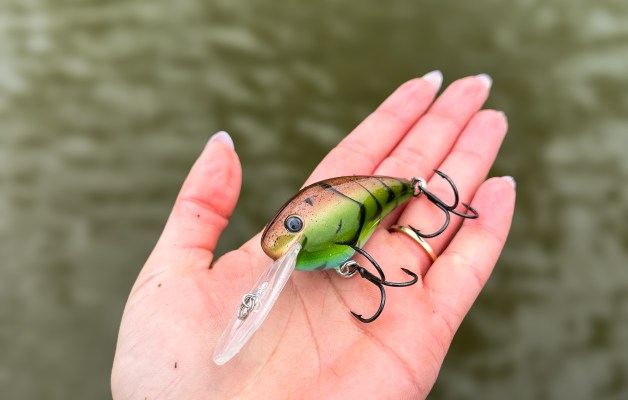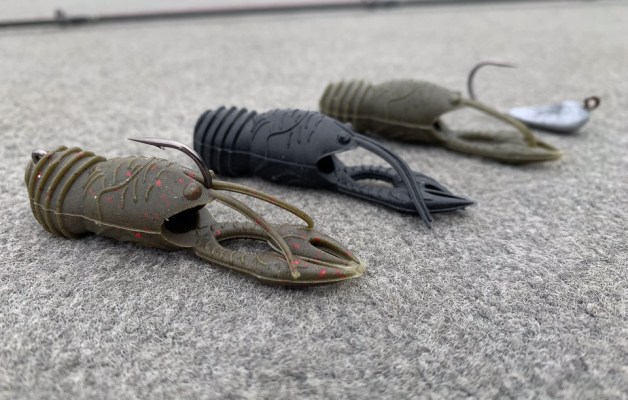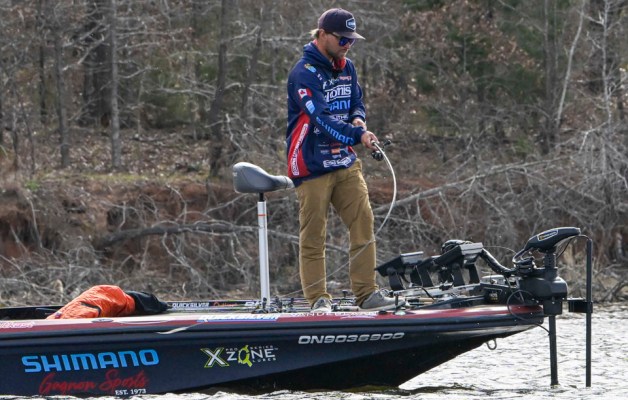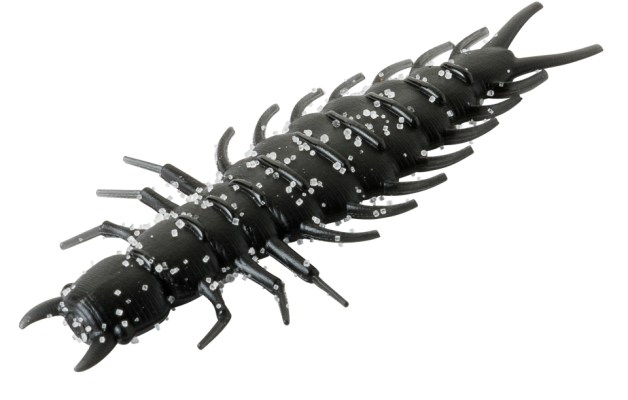
The offshore game is no longer an art practiced by only a select few zealots glued to their flashers. As space-age electronics have become more widespread and crankbaits have been fine-tuned for specific situations, everyone from weekend warriors up to Bassmaster Classic champions have turned away from the bank. That democratization of information means that key schools can be heavily pressured, and individual fish can be finicky, and in turn has made the tools that directly connect the angler to the bait – rod, reel and line – all that more important.
Despite all of this attention and analysis to key cranking strategies, Elite Series pro Keith Combs is surprised that even among many pros comparatively little thought is put into the choice of a reel, and that they don’t know what to look for in a rod. Combs has won hundreds of thousands of dollars with a diving bait, including a victory in the 2013 Elite Series Rigid Industries Falcon Slam, and he’s carefully evaluated every aspect of his system from boat positioning to equipment down to body mechanics. He believes that just picking up a reel labeled “Cranking” and applying it in a one-size-fits-all manner is a recipe for disaster. He’s just as picky when it comes to rods, believing that a good cranking system is only as strong as its weakest link – and he tolerates no weak links.
The Right Choice
Many of the supposed best reels for cranking have slow gear ratios, in the 5:1 range, and Combs will occasionally employ a 5.5:1 Shimano Curado in cold water, but he likes the same model in a substantially faster gear ratio for the vast majority of his crankbait fishing.
“A high-speed reel is necessary,” he said. “There are times when I use that high speed for retrieving, but more than anything it’s important when a fish is hooked. When that fish comes up and jumps, that’s when you need to be reeling your hardest to keep the line tight and your hooks pinned. When that happens, even a 6.3:1 reel might not be up to the task. You can’t compensate if the fish does anything abnormal.”
Most of the time a medium-paced retrieve with a 7.2:1 Shimano Curado gets the job done. If the fish demand a warp speed retrieve it’s up to the task, and except for those limited times when only a super slow crawl will do forces him to a slower Curado, he can simply ratchet back the pace of his retrieve as required.
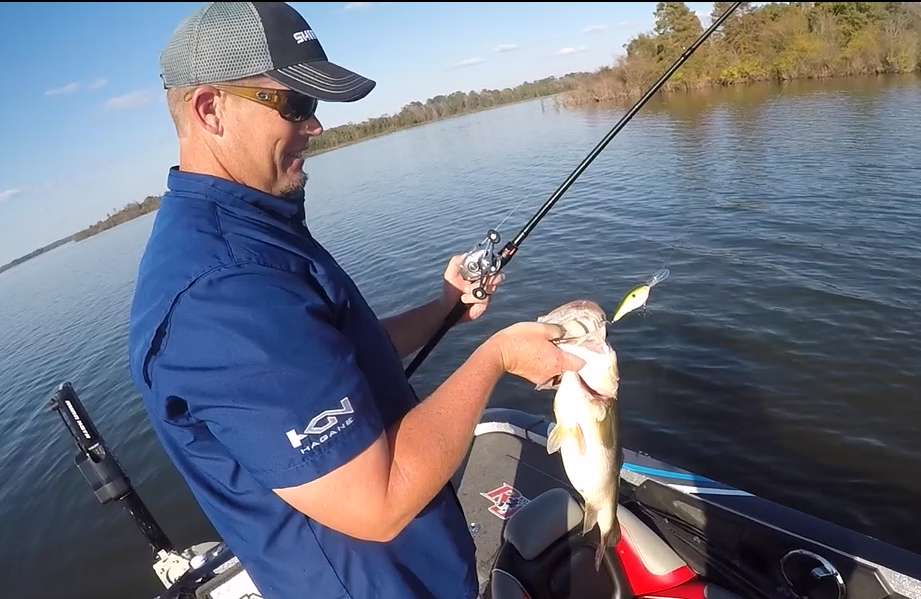
Years ago, the few high speed reels that existed didn’t have the torque to bring back the hard-pulling big crankbaits, but Shimano’s X-Ship technology creates more durable gearing to handle that strain with ease. The pinion gear is supported by bearings on both ends, so even extremely heavy loads can’t alter any of the gears’ positions. Additionally, the combination of a one-piece frame with an enlarged drive gear and pinion gear eliminates any possibility that the gears will bind under the pressure of a big fish. The rise of the new 2- and 3-ounce ultra-deep divers has made that kind of stability a necessity, especially for pros like Combs who are thrilled to be able to plumb 25 foot depths on a long cast with a hard grinding retrieve.
“There are so many more options as far as baits go nowadays,” he said. “It has changed the game. So many people are fishing offshore that it’s no longer just about finding them but getting them fired up.”
He also likes the Curado’s durability. “I’ve been cranking hard with some of them for three or four years,” he said. “They hold up because of the metal frame. It’s critical that there be no flex in the exterior and that translates into more sensitivity when you’re deep cranking. They’ve never let me down.”
Indeed the Hagane Body is the perfect ratio of strength-to-weight, delivering no flex in a 7.4-ounce package that would have been unthinkable a generation ago.
Combs is in his comfort zone throwing big cranks that often weigh 3/4 of an ounce, a full ounce or more, and they perform best on a long cast. That’s another reason he’s so reliant on the Curados. With a 200-sized reel, he can spool up well over 100 yards of 12- or 15-pound test fluorocarbon and the wide spool enables it to come off smoothly and evenly. The S3D Stable Spool Design further enables long distance casts by significantly reducing spool vibration. While anglers using other brands may have to “trick out” their reels with specialized bearings or lubrication to maximize casting distance, Combs said that his Curados are ready to roll right out of the box.
“I set my SVS Infinity brake system half in, half out,” he said. “And to make sure that the brake is right, I release the crankbait until it hits the water. It shouldn’t cause a huge backlash. I keep it pretty simple.”
He’s also amazed by the fact that the drag system can be adjusted quickly and smoothly on the fly. “I set it pretty tight to start, not cinched all the way down, but enough so that it doesn’t have any slippage on the end of a long cast. I don’t want it to slip at all on the hook set or when I’m really torquing down through the junk. But then when the fish gets close to the boat I’ll back it off a little bit manually.”
He’s pleased with the Curados’ durability and performance. When you crank nearly 200 days a year, with dozens of hard-driving casts on each of those days, it’s a true test of a reel’s construction, and he said that even his older Curados “haven’t failed me one time yet.”
A New Sheriff in Town
As the cranking game has evolved, and allowed him to put his big baits into depths that were previously unheard-of, Combs has been experimenting with new gear for his biggest, deepest diving, fatigue inducing lures, including a reel that combines the best attributes of a four wheel drive truck and the most refined European sports car. It’s the Shimano Tranx 300, the little brother of the Tranx 500, a reel developed to withstand the pull of the strongest species that swim – from redfish to golden dorado to tuna to trophy bass – in a low-profile package that will withstand the harshest environments.
“It is the most heavy-duty reel I’ve tried,” Combs said. “It’s not as light as the Curado, which only weighs a little more than 7 ounces. The Tranx 300 weighs over 11 ounces. In most situations, the Curado will get the job done, but there are times, especially when throwing the biggest plugs, where I can see that having the lighter reel won’t matter as much. More than anything, with the Tranx you can get a considerably longer cast.”
The Tranx 300 is available in two gear ratios – a 5.8:1 version for power and for cold weather crawling, as well as a 7.6:1 model for fans of faster reels like Combs. While the former may be the ultimate beast, the latter doesn’t give up anything when it comes to winching in giants. Combs trusts it to handle the most teeth-rattling big baits that any manufacturer dares to produce. It holds over 200 yards of 12-pound fluorocarbon, and with a 2-ounce mega-deep diver and the wind to his back, Combs can run the spool low. With the “longlining” or “strolling” technique no longer legal in most tournaments, he can achieve that same effect specifically as the result of having exceptional gear.
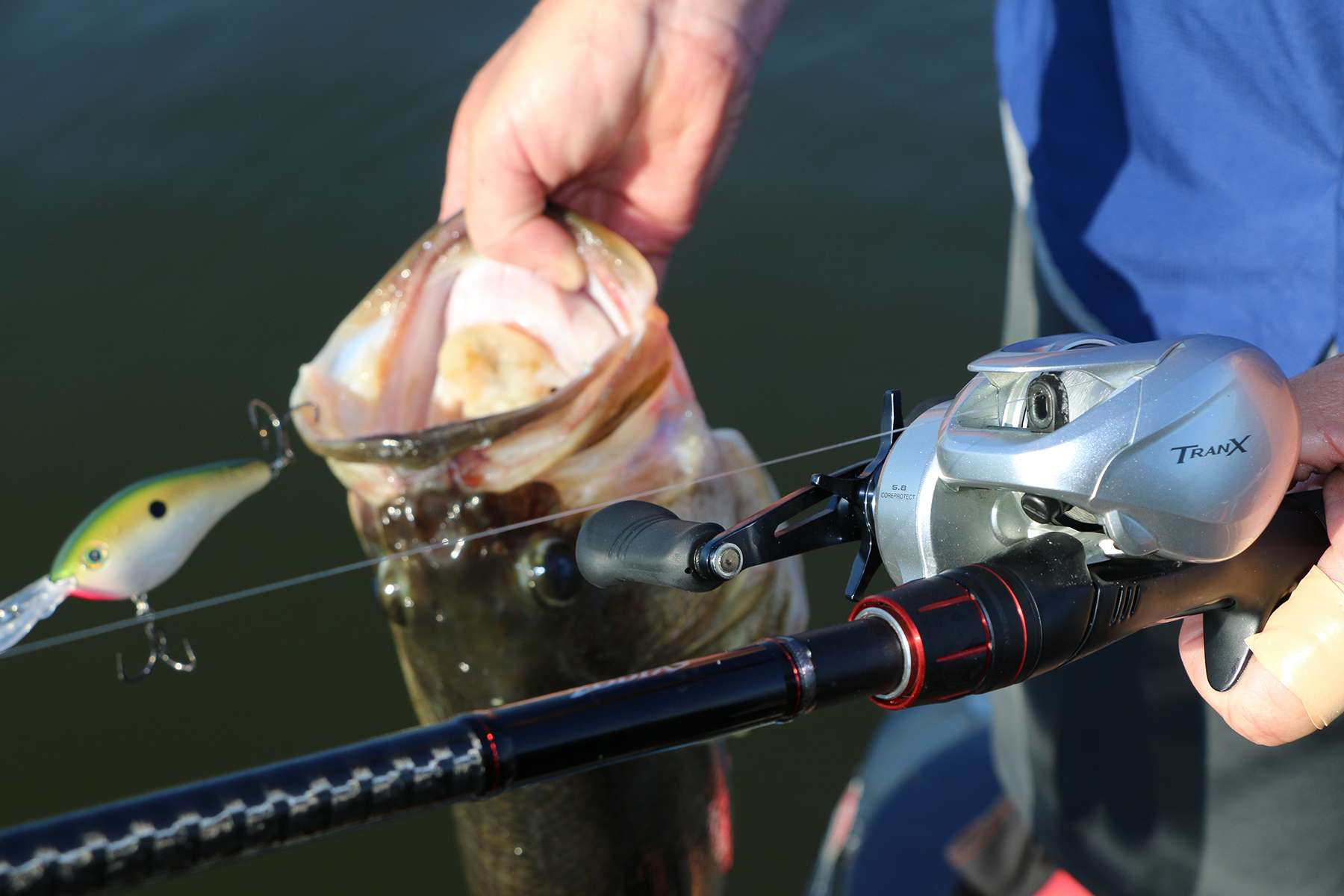
Depending on gear ratio, the Tranx series offers an astounding 18 to 22 pounds of maximum drag, so no bass is going to push you around, but as with his Curados, Combs can easily adjust the drag system in the midst of the fight, enabling him to easily give a 10- or 12-pounder surging close to the boat just enough slip so the hooks stay firmly implanted and the big girl makes it back to weigh-in.
Rods Up to the Task
While Keith is convinced that a smooth yet durable reel is an essential part of any cranker’s success, its value can’t be understood unless it’s mounted on an equally advanced rod. He’s a devout fan of the Shimano Zodias series, a lineup that includes multiple composite cranking sticks built for a wide range of situations.
“They load perfectly on the cast so you can really bomb a bait out there,” he said. “They have a lot of midsection flex, starting about a foot above the reel and then progressing consistently all the way to the tip.”
He uses the 7-foot ZDS170M-G for his square bills, the 7’2” ZDS172MH-G for all around cranking, and the 7’6” ZDS 176MH-G for his true big baits. The last rod seems perfectly designed to balance with the Tranx 300, able to handle the reel’s heft compared to the Curado without being heavy.
Combs has never been comfortable with a straight graphite cranking rod because he believes that most are too stiff in the midsection.
“Just about everybody makes a cranking rod with a good tip,” he said. “But if you really want to find out if a rod can handle all-day cranking pick it up about 3 feet above the reel seat and look for flex. If I don’t see that, I put it down immediately.”
Of course there are other rods that have that flex, but most achieve that goal at the expense of sensitivity. Combs said that the Hi-Power X construction of the Zodias rods, combined with a CI4+ reel seat, Fuji Alconite guides and his preferred EVA handles prevent these rods from succumbing to that fate. In fact, he believes that they’re as sensitive as many companies’ pitching sticks. That’s critical when fish barely tick a crankbait or start swimming at him and he’d otherwise lose feeling. Extra sensitivity means extra fish in the livewell. He’s also working with similar models in the 2017 Expride lineup, which likewise feature the Hi-Power X construction in a range of technique-specific rods that are going to be true game changers.


